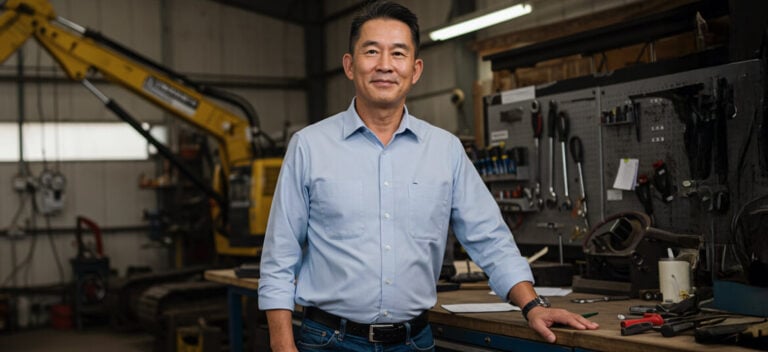Business growth can be tricky. Although each business is unique, researchers have uncovered common growth stages of small businesses and the challenges that are faced at each stage. Here we’ll look at these growth stages and what the choices that need to be made at each one.
What are the stages of small business growth?
This question is open to interpretation but authors Neil Churchill and Virginia Lewis provided a clear outline in The Five Stages of Small Business Growth published in the Harvard Business Review in 1983. Although the article was published over 30 years ago, the fundamentals of growing a business have not changed and fall into five stages.
Business Growth Stage I: Existence
In the beginning stages, the challenges are quite simple and include things such as finding customers and delivering products and services. According to the article, questions for the business owner at this early stage include:
- Can we expand from one key customer or pilot production process to build a much broader sales base?
- Do we have sufficient funds to cover the high cash demands of the start-up phase?
Businesses at the Existence Stage are simple. The owner is responsible for most, if not all, tasks and directly supervises staff. There is little or no formal planning or systems.
In summarising this stage of business growth, the authors state:
‘Companies in the Existence Stage range from newly started and retail stores to high-technology manufacturers that have yet to stabilize either production or product quality. Many such companies new gain sufficient customer acceptance or product capability to become viable. In these cases, the owners close the business when start-up capital runs out and, if they’re lucky, sell the business for its asset value. In some cases, the owners can’t accept the demands the business places on their time, finances, and energy, and they quit.’
The companies that are able to stay in business eventually become Stage II businesses.
Business Growth Stage II: Survival
Businesses that reach this stage have shown that they are viable. They have enough customers and are able to provide products or services that are satisfactory enough to keep them. The key challenge at this stage shifts from existence balancing the relationship between revenues and expenses. The article notes the main questions business owners ask as follows:
- ‘In the short run, can we generate enough cash to break even and to cover the repair or replacement of capital assets as they wear out?’
- ‘Can we, at a minimum, generate enough cash flow to stay in business and to finance growth to a size that is sufficiently large, given our industry and market niche, to earn an economic return on our assets and labour?’
At this stage of business growth, the owner still ‘is the business’. The company might have a few employees who are supervised by a sales manager or a general foreman.
A business in the Survival Stage my grow in size and increase its profitability and move on to Stage III. Many businesses stay at Stage II for some time and earn marginal returns on invested time and capital. Many go out of business when the owner quits or retires. Businesses that fall into this category include family businesses and manufacturing companies that are not able to sell their product or process as planned. Although marginal, some of these businesses have become economically viable enough to be sold, but usually at a slight economic loss. Others will fail and completely drop out of sight.
Business Growth Stage III: Success
At this stage, the company is stable and profitable. It has the systems and finances in place to keep operating. The key questions for the owner at this stage are whether to use the company as a platform for growth (called a substage III-G company) or as a way to support the owners as they partially or completely disengage from the business (called a substage III-D company). Business founders might want to disengage for a number of reasons, including pursuing hobbies and other interests, starting new companies, running for political office, or doing volunteer work.
With a Stage III-D company, the company has reached a point where it is economically healthy, is large enough, has sufficient market penetration to ensure success, and earns average or above-average profits. The business can stay at this stage of business growth indefinitely if changes to the business environment do not destroy the company’s market niche or bad management doesn’t damage competitiveness. At this stage, the company has managers that have taken on the duties performed by the business owner. The business has enough cash while the main concern is to conserve cash in prosperous times so that it can withstand inevitable difficult times.
In Substage III-G, the owner uses the cash and borrowing power of the company to finance business growth. At this stage, important tasks include ensuring ongoing profitability to keep its source of cash and build-up management that focuses on future growth. Systems and operational planning are needed at this stage which requires the owner to be involved in the company’s affairs. If the company is successful at Substage III-G, it will move to the next stage, Take Off.
Business Growth Stage IV: Take-Off
The key problems at this stage are how to grow the business quickly and how to finance this growth. Important questions fall into the areas of delegation and meeting cash demands. If the company can successfully overcome these challenges, it can make it to the next stage of business growth. If not, it could drop back to being a Stage III business, drop back to the Survival Stage business or even fail.
Business Growth Stage V: Resource Maturity
The biggest challenges at this business growth stage are to consolidate and control financial gains resulting from rapid growth and to retain the advantages of being small, including having the ability to respond quickly and having an entrepreneurial spirit. Management and systems need to be expanded quickly enough to eliminate inefficiencies resulting from fast growth. Tools and practices – such as budgets, strategic planning and standard cost systems – without stifling the entrepreneurial environment.
Key factors for growth and development
The article lists several factors that are prominent in determining the ultimate success or failure of a business as it goes through the business growth phases. One of these is ‘Financial resources, including cash and borrowing power’. Small-to-medium businesses wanting to grow are challenged in getting business finance. A survey conducted in early 2019 revealed that 40% of SMEs found it challenging to get business finance. As a result of the Banking Royal Commission, banks have reduced their lending to small and medium businesses. In addition, secured business lending has been reduced as a result of falling housing prices. Some banks are no longer accepting residential property as collateral for business loans while others have reduced the loan-to-value ratio. Both of these actions have reduced the business finance available to small businesses.
As a result of these developments, more Australian businesses are turning to online fintech lenders for SME finance to fund business growth. Moula small business loans have assisted business owners with the finance they need as they move through the business growth stages.
If you’re interested in getting an estimate of principal and interest repayments for business loans, check out the Moula Business Loan Calculator.




